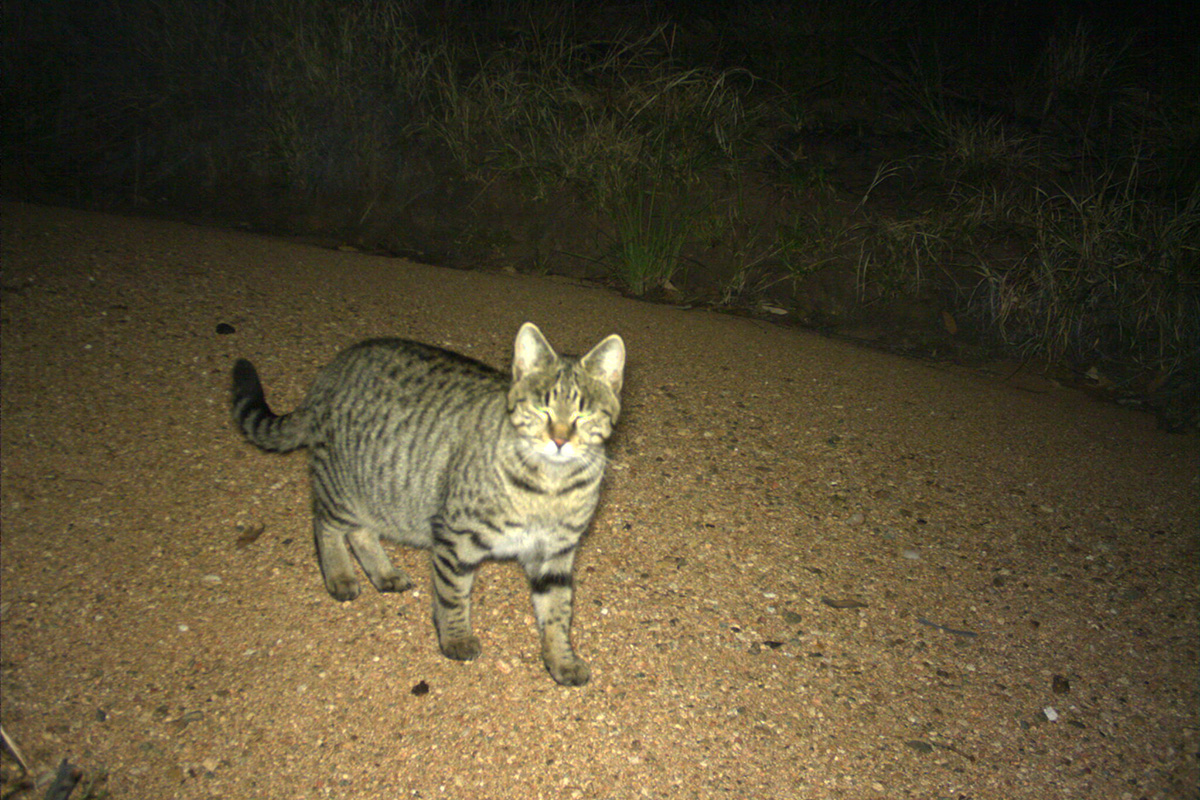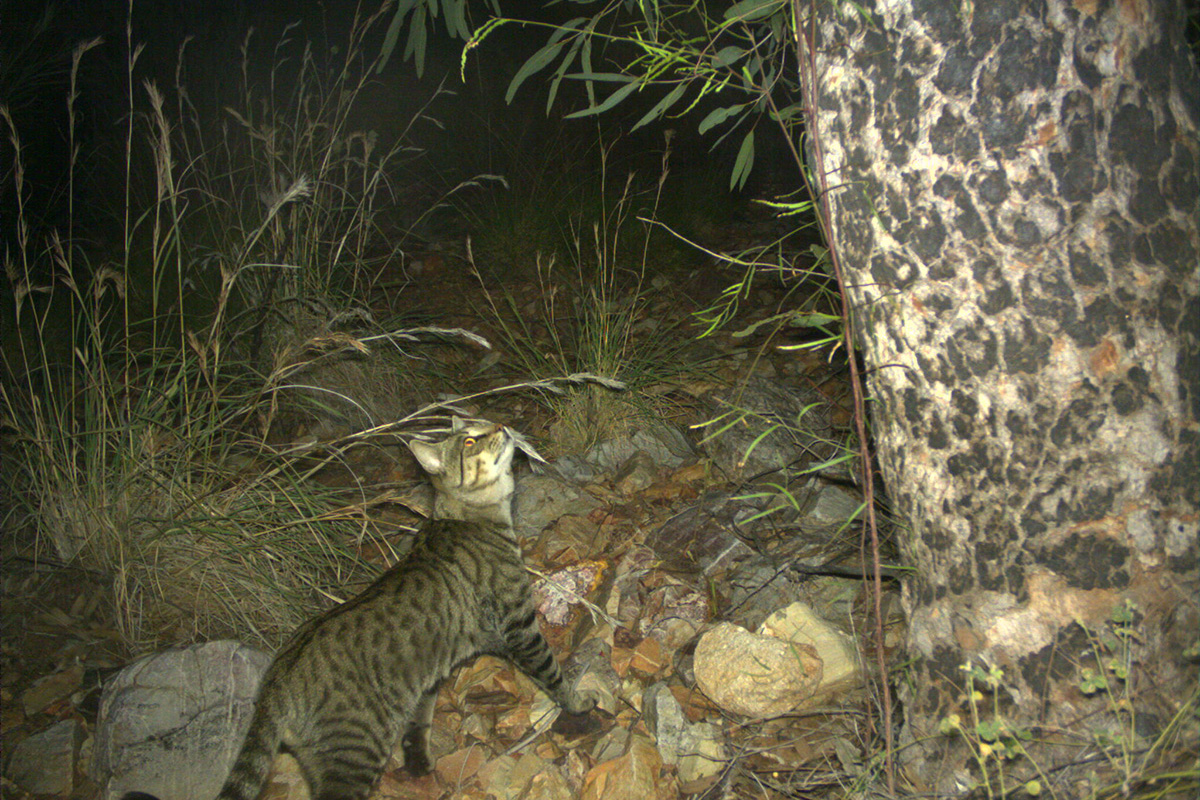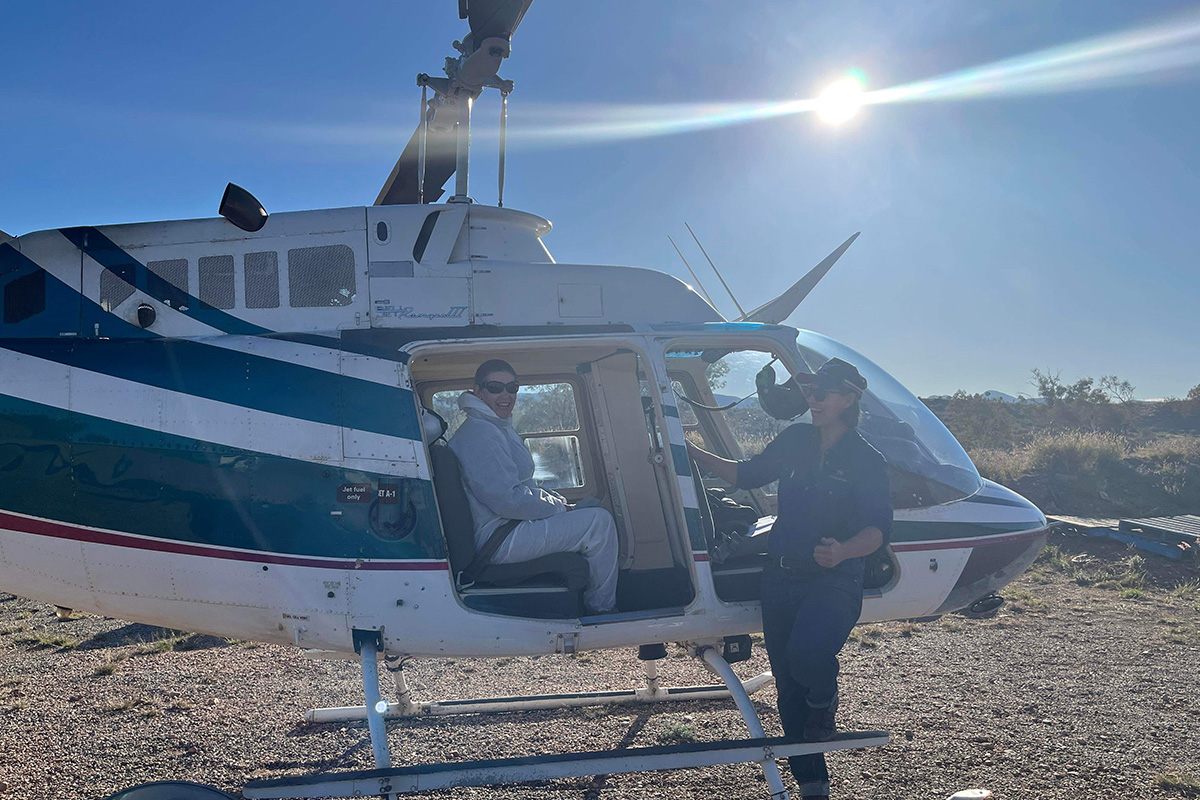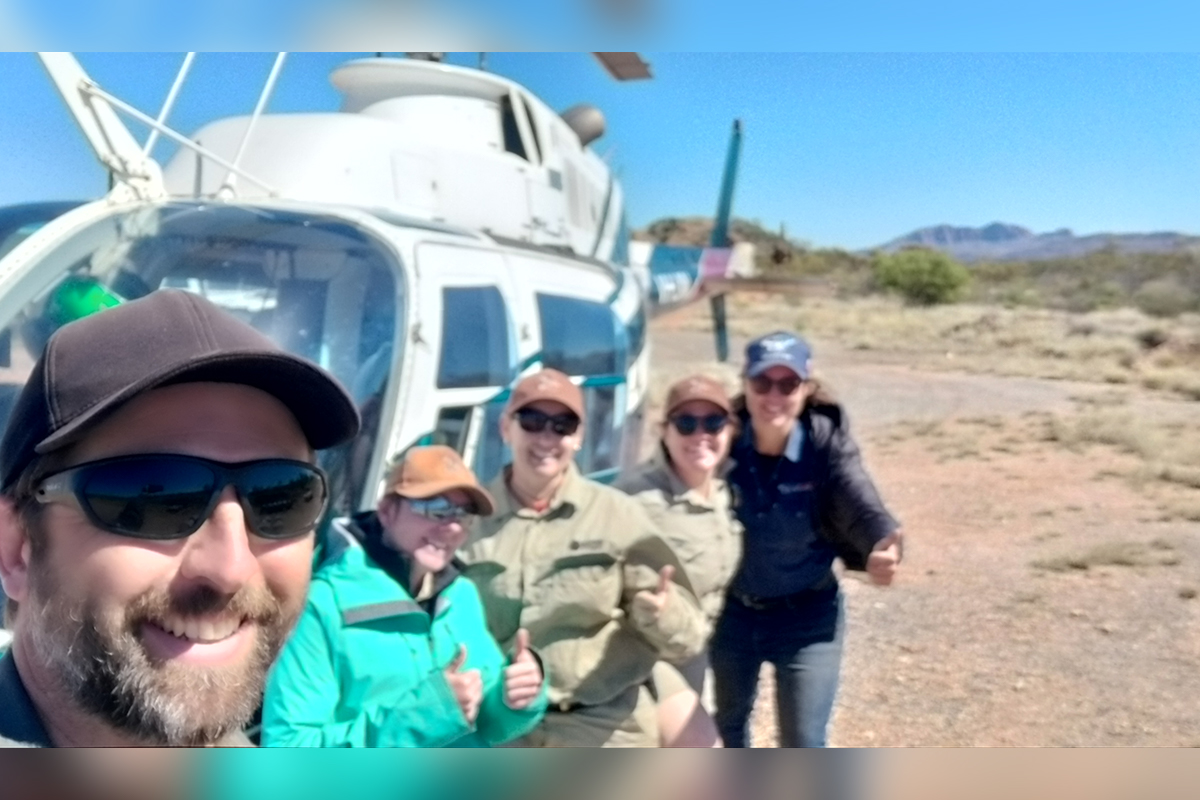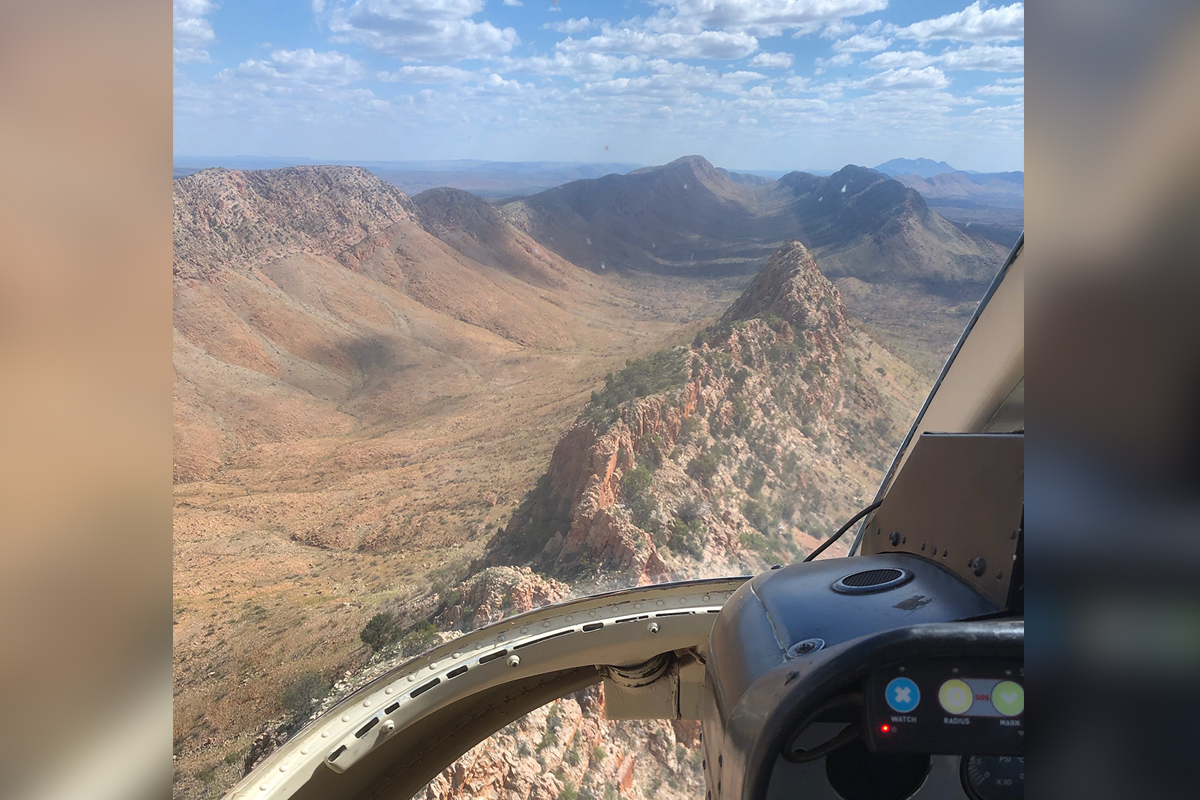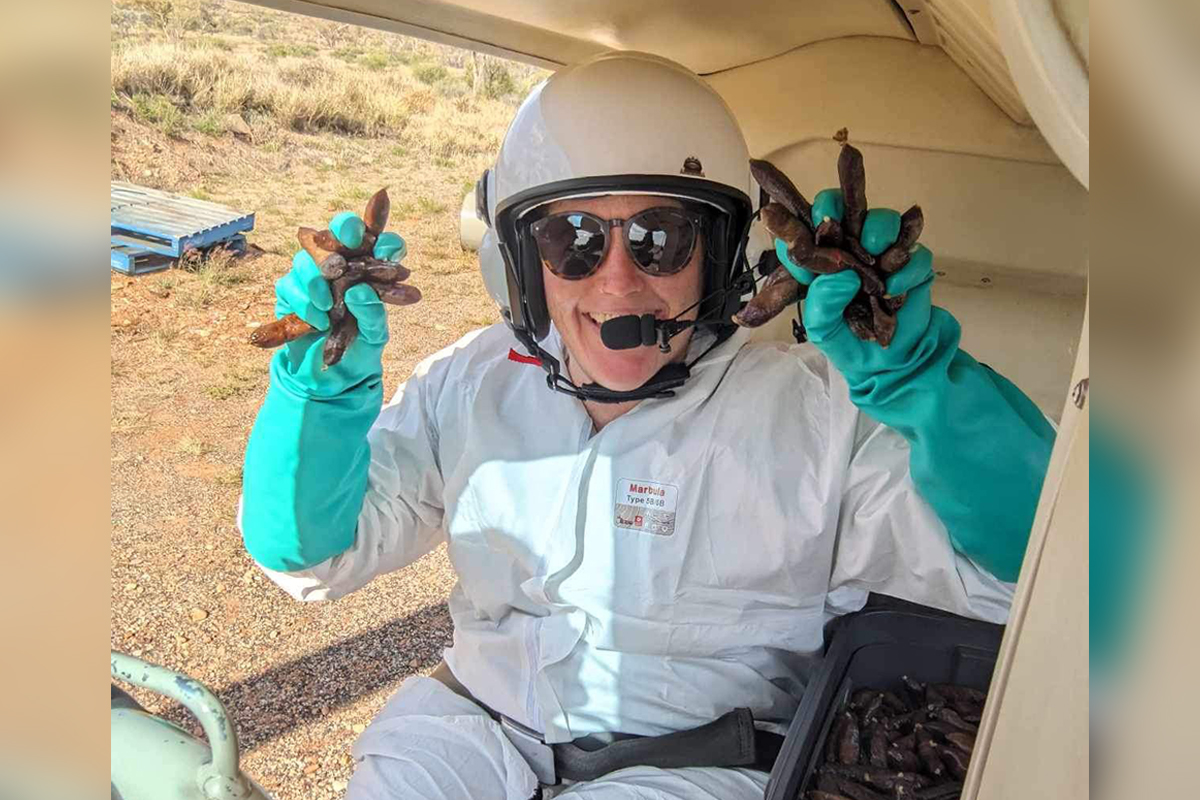Protecting our threatened species
In an across department collaboration our rangers and scientists have been working with a local helicopter charter company to undertake a week long feral cat baiting program in Central Australia.
The program saw approximately 27,000 Eradicat® sausage baits (containing 1080) aerially deployed across the western half of Tjoritja / West MacDonnell National Park. Staff committed almost 100 hours to the operation from logistics and planning to bait preparation, and finally bait deployment. Almost 25 hours were spent flying to deploy the baits.
The program was developed with Flora and Fauna and Parks and Wildlife staff who successfully demonstrated, over a five year period of experimental baiting that feral cats can be controlled using Eradicat® baits. The experimental baiting program also demonstrated that populations of the critically endangered central rock-rat have increased and remain higher in baited areas, compared to unbaited areas.
The vulnerable black-footed rock-wallaby populations also increased in the baited areas, further improving the biodiversity values in the park.
The program, now in its second year of operation, encompasses 1,100 km2 and includes all of the known rugged mountain range refuges for the central rock-rat in Tjoritja / West MacDonnell National Park. Pre- and post-baiting remote camera monitoring has shown that feral cat numbers significantly decrease in response to the baiting.
This is one of the many programs the department undertakes to manage feral animals and protect threatened species, and this vital landscape-scale program is helping save the central rock-rat from extinction.


